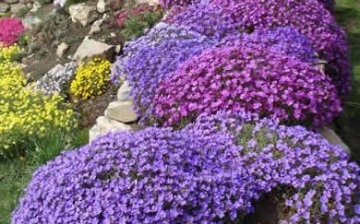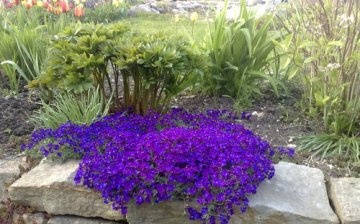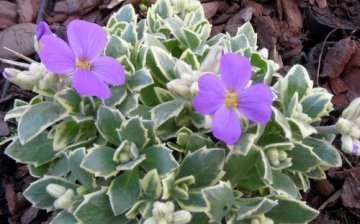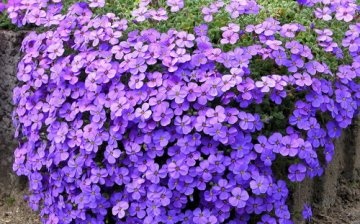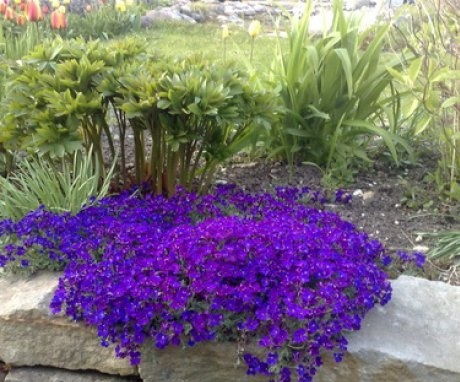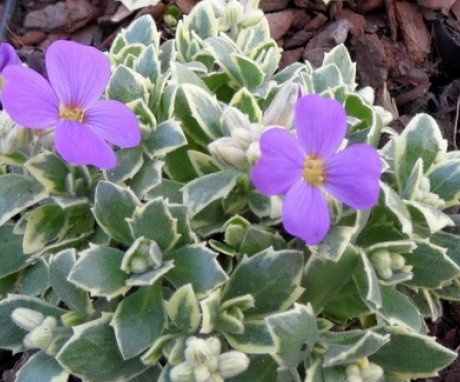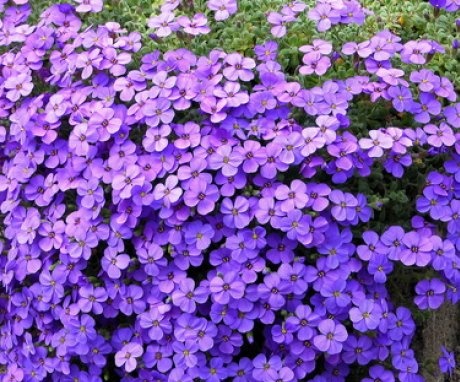Growing avery from seeds and cuttings
Aubrieta is a herbaceous evergreen that pleases the eye with its bright green outfit while its neighbors are still awake from their winter sleep. Soon, the green rug of creeping stems will be covered with racemose inflorescences, behind which no greenery will be visible. Flowers can be any color of the rainbow, from white, pale blue and pale pink, to all sorts of shades of purple, blue, crimson and purple.
Content:
- Aubrieta perennial
- Growing from seeds
- Growing by cuttings
- Dividing the bush is unacceptable
- Care features
Aubrieta perennial
Central Asia and Southern Europe are considered the birthplace of Aubriet, which in our area bears a somewhat disdainful name - windbag. In fact, flower growers are very fond of this unpretentious, but very beautiful plant, without which it is difficult to imagine cascades. alpine slidesas well as vertical gardening options.
A variegated floral carpet of a perennial plant called Aubrieta can decorate any garden plot. The squat and beautifully spreading shoots of this flower are ideal for growing on decorative alpine slides or large flower beds. In addition, the shaved is more than unpretentious and will feel great even on the most infertile soils, on which most ornamental plants will die.
Growing from seeds
Growing Ariets from seeds is the easiest and most affordable way to acquire this very attractive plant. The sowing material must be placed on the beds in May or at the very beginning of autumn and the soil must be mulched with a sand mixture. It is also advisable to fence off the area where the aubriet will grow with a special ridge. Out of the blue, the tender shoots of this plant can simply get lost among the weeds. Growing Arieta from seeds has one drawback - with such a planting, the plant blooms only in the second year.
Growing by cuttings
It is also enough to simply grow a shank from cuttings. To do this, cut off the cuttings from the branches on which there are no flowers, and root them in peat-sandy soil, best of all, in greenhouse conditions. Young plants should be transplanted to a permanent place at the end of summer, so that before the onset of the first cold weather they have time to take root and get stronger.
In regions with a cold climate and early autumn colds, it is better to leave young shoots of the plant in a greenhouse until spring. Every year, adult plants become more and more vulnerable, so it is advisable to carry out grafting and plant young shoots annually.
Dividing the bush is unacceptable
The plant does not like transfer, so attempts to separate the part with the rhizome usually end badly. So that there is no need to thin out too thick carpet, even at the sowing stage, it is better to scatter small, flat, brown seeds over the territory so that later the shoots do not interfere with each other's development. The best option would be a method of planting seeds in crevices between stones. The rooted waterfalls of flowers, descending the stone ledges, are unforgettable and simply magnificent.
Saplings are especially painful pick... This circumstance must be taken into account in order to avoid unnecessary losses.For this, the seeds are planted in separate containers, it is especially convenient to use special peat tablets, which are compressed and molded nutritious soil mixtures, which are maximally adapted for high-quality growing of seedlings.
By planting seedlings grown in tablets, we almost completely eliminate a stressful situation for the plant.
Care features
Aubrieta does not need special attention, it will even have to be watered only in a very dry season. Young specimens are more demanding, but unpretentious. It must be borne in mind that waterlogging of the soil is more undesirable and painful for a plant than a lack of moisture.
Sunlight is extremely necessary for any representative of the green world, and for aubriet it is crucial, because even partial shade will deprive it of the opportunity to bloom. For this plant, you need to choose well-lit areas, preferably raised above a horizontal surface. Aubrieta looks great on stairs, curbs and walls.
As a rule, winter frosts are not terrible for the plant, but if it is possible to cover it with a small layer of fallen leaves, then there will be no harm. In early spring, you need to inspect the plant, remove damaged leaves and give it the desired shape. It is not recommended to cut off the shoots in autumn, and by cutting off the stems immediately after the first flowering, you can ensure that the aubrieta will quickly grow new shoots and bloom again.
By the way, you can enjoy raw or boiled leaves and aubrieta flowers, which are considered edible. There is an opinion that there are practically no plants that are absolutely harmful to the body, everything depends on the amount of the product used, its quality and proportions, but the beauty that plants give us is undoubtedly useful to us.



